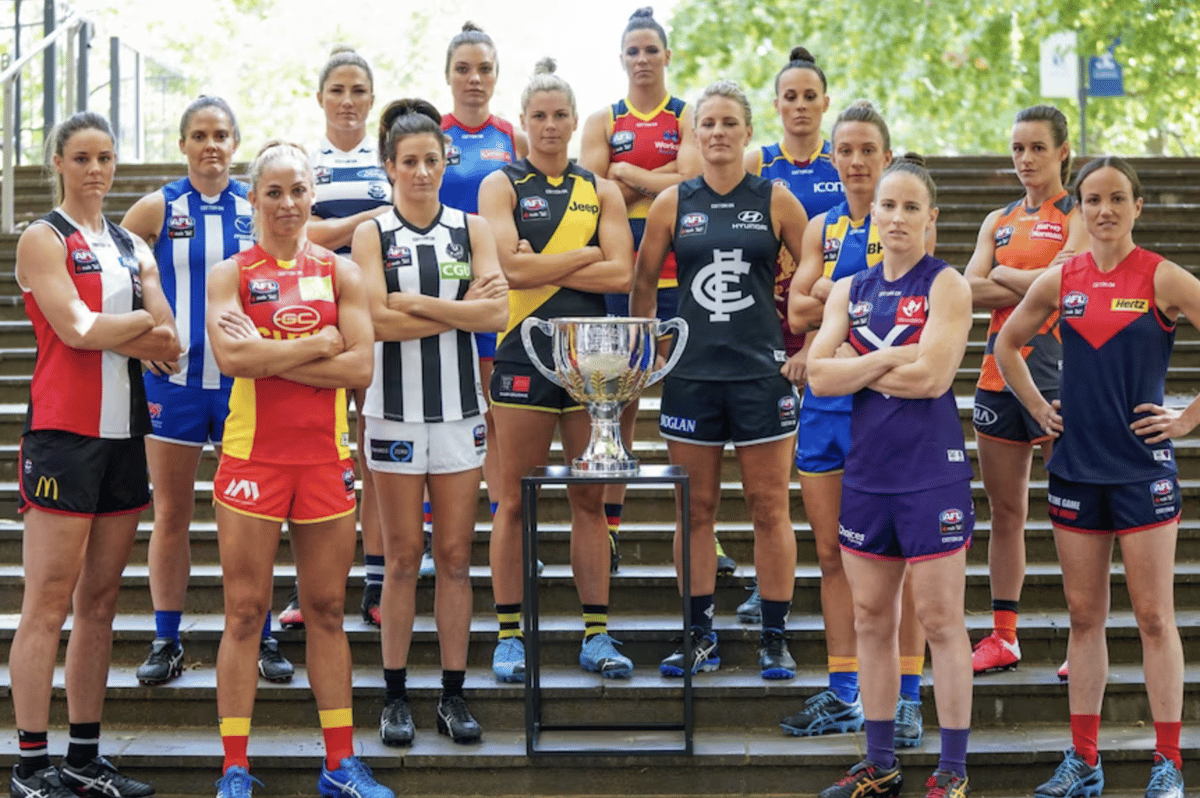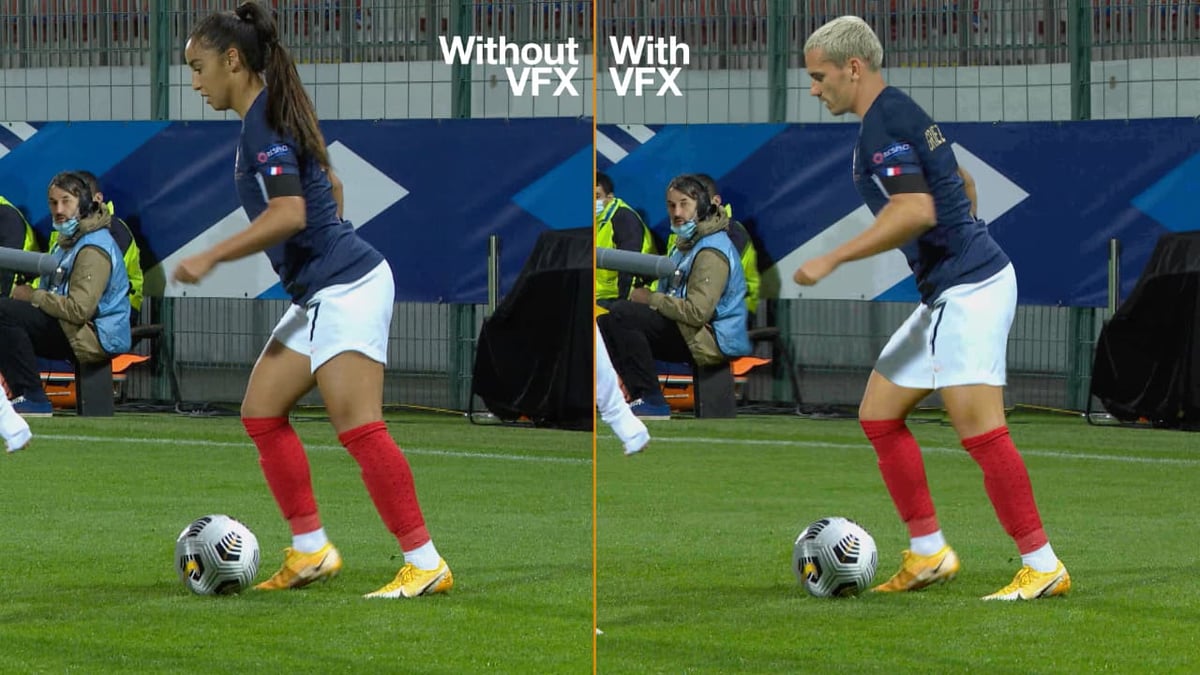The 2020s have been monumental for women’s sports: March Madness put WNBA rookies on the map before the 2024 season even started, the PWHL’s inaugural season was an endless cycle of setting and breaking attendance records, and the 2023 FIFA Women’s World Cup brought unparalleled statistics in everything from ticket sales to broadcasting. True to the TOGETHXR merch popular with celebrities and athletes alike, these days, “Everyone Watches Women’s Sports”.
Viewership and sponsorship have grown exponentially since our last deep dive into the ever-changing women’s sports landscape. Here are some highlights from the past few years:
- The 2024 Women’s “March Madness” Championship Game garnered 18.7M viewers, making it the most-watched basketball game (men’s or women’s, college or pro) since 2019 🏀
- In the first month of the 2024 WNBA season, they averaged 1.3M viewers a game, nearly triple last season’s average 🏀
- The first game of the inaugural PWHL season amassed 2.9M viewers across Canadian broadcast networks 🏒
- Halfway through the 2024 NWSL season, regular attendance had surpassed 1M fans (for the third consecutive season) ⚽
- The world record for most attended women’s sports event was broken last August when 92K people got tickets to watch the Nebraska Huskers beat the Omaha Mavericks in NCAA Volleyball 🏐
- The Women’s Tennis Association boasted a record global audience of 1 billion for their 2023 season 🎾
- At the end of 2023, the NWSL signed a four-year, $240M deal, marking the most expensive media rights deal in the history of women’s sports. Earlier this month, it was topped by the WNBA, who signed an 11-year, $2.2B deal ⚽🏀
- At the 2023 FIFA Women's World Cup… ⚽
- 53.9 million people watched China play England, the largest audience for a single match at the Cup
- The semi-final game between England and Australia became the most-watched television program of all time in Australia
- Traffic on FIFA’s digital platforms in the first 15 days of the tournament surpassed the entirety of the 2019 tournament
And this year's Summer Olympics are the first Olympic Games with an equal number of male and female athletes competing. Looking to the future, the projected revenue for women’s sports in 2024 is $1.3B, which is up a staggering 200% from 2021 (Deloitte).
Investors, partners, and fans are increasingly leaning into women’s leagues, and the perspective is changing from “how do I minimize their cost” to “how do I leverage this opportunity for growth”. To answer that question, we’re digging into the factors that have contributed to this booming interest, and the aspects that set women's sports apart.
Identity and the Power of Purpose
The value of a sport and a team is shaped by social consensus - it’s an aspect that drives the investments and partnerships necessary to sustain a league, and it’s also one that can be influenced.
Women’s sports leagues have long been forced to ask themselves “who are we”, “what do we stand for”, and “what do we want to be?”. With little patience afforded to them when it comes to growth, there have been relatively few investment opportunities in this space in the past and more importantly, a failure to build a “belief in the value of women’s sports”. As a result, players were forced to dig deep and build strength from the ground up.
Most of these leagues' current success stems from the rock-solid foundation created by generations of female athletes who refused to stop playing. From their grassroots movements to their moments of stardom today, they’ve leaned into that identity. When you ask “what does the WNBA stand for,” fans know exactly what to say, and this clearly defined identity gives women’s leagues an edge in today’s purpose-driven environment.

The Power of Purpose
We’re in the golden era of social purpose, especially when it comes to brands interacting with fans through social media. Nielsen’s 2022 Global Sports Marketing Report found that purpose-driven campaigns (i.e. posts that tie back to a community and/or societal issues) improved sales long term up to 3x. Involvement in social justice and activism is also an important factor that younger fans - Gen Alpha, Gen Z, the Zillenials - consider when choosing a league or team to support. And, as said above, women’s leagues tend to have a sense of purpose entrenched in their identities, with social initiatives around inclusivity and equity being at the forefront of their initiatives each year.
Alignment & Loyalty: Where Money Follows
Stakeholders on the commercial side of sports are constantly searching for the next growth play and women’s leagues should be top of the list. What could be more valuable than creating lifetime customers with a single partnership? Or expanding your fanbase to include purpose-driven and loyal fans? Fans today care enough (and have enough tools) to peel back the layers on brands to see if they put their money where their mouth is. In fact, 55% of sports fans are not convinced that the measures brands are taking in terms of championing societal issues are contributing to real progress (Nielsen).
As a brand, you can get ahead of this by entering into a long-term relationship with a women’s league, where the focus is on creating sustained growth for the league and its empowerment initiatives. Not only will your focus on growing the league come back to you in the form of high returns on your investments, but you’ll be able to capture the next generation of fans driving sport. Keep an eye out for upcoming updates on Tradable Bits and Trailblazing Sports Group’s “Stronger Together Marketplace”, a first-of-its-kind platform that connects women’s sports organizations with ready and willing brand sponsors who are looking to invest in women’s sports properties across North America.
For the big leagues today, we’re seeing large sponsors take the leap and reap tremendous benefits (Nike and their WNBA hoodie and special edition jerseys), but even for the smaller women’s leagues, there’s an incredible opportunity for sustainable partnerships. Persistent doubts about the commercial viability of women’s sports can be put to rest if brands start to recognize the amount of untapped potential that exists here. Brands can cater to an extremely passionate fanbase and enhance their brand equity by entering this space. Alignment matters and loyalty breeds immense revenue expansion opportunities. Money will follow.
.png?width=1200&length=1200&name=womens%20sports%20blog%20(2).png)
Personal Branding: The Influencer
In addition to this trend of brands entering the space, women’s leagues have become powerhouses in “influencer marketing” - that is, using the voices of their athletes to create calls to action, and broadcast directly to fans. From Coco Gauff to Alex Morgan, brands stand to gain a lot by getting in with these athletes’ personal brands and their huge social followings.
Growth and Expansion
Recently, we’ve seen the start of the Professional Women’s Hockey League, Women's Professional Fastpitch, and the upcoming Northern Super League. It’s no wonder the past few years have been filled with new league announcements; The women’s sports world is poised for expansion. While men’s sports leagues are quite saturated, interest in women’s sports is at an all-time high, and professional leagues are either non-existent or still in the early phases. And unlike their male counterparts, investors don’t need to have David Beckham’s net worth to be able to afford an expansion team.
The returns on expansions are massive. Earlier this month, NWSL team Angel City FC was purchased for $250M, making it the most valuable women's sports team in the world. Angel City paid a mere $2M expansion fee when the team was established in 2020. This new landscape also brings an opportunity for the growth of less commonly followed professional sports in North America like volleyball, softball, and rugby. Volleyball is having it’s moment right now, with League One Volleyball set to launch later this year, the Pro Volleyball Federation having debuted in April, and Athletes Unlimited Volleyball having wrapped up their third season in 2023. Now is the time to be investing in up-and-coming sports and leagues.

Propelling Fans to Create Sustained Monetization
So far we’ve been addressing the successes and history of the big women’s leagues here in North America, which doesn’t capture the full picture. This isn't a North American movement, but a global one.
The successes we’ve seen in women’s leagues across the world prove that if you gain positive attention from a fanbase at large and imbue them with a sense of identity and purpose for your team, partners and brands take notice. Fan engagement builds the momentum and eyes to drive revenue forward. This is where the power of the league in storytelling and support comes in. We’ll look at two examples.
1) The AFLW:
Formed in 2016, the AFLW is a fairly new league - but their commitment to promoting inclusion and participation in the sport is clear. In 2021, the league featured many new initiatives, including the first dedicated Pride Round, the inaugural Indigenous Round, and the Toyota Good for Footy Round (which was a joint themed round for both men and women’s competitions).

As of 2021, over 80% of AFL partners also invested in AFLW, up from 10% in 2017. This points to the power of alignment for partners to promote Australian Football, while also celebrating women in football. The increase in investment and growth is due in large part to a support system drawn together by the story of empowering female footy across the nation. There is a competitive advantage offered by women’s football, not only in their quality of commitment but in their drive to be accessible and engaging to a broader fanbase.
2) Orange x Les Bleues
Ahead of the 2023 FIFA Women’s World Cup, Orange, a French telecommunications company, put out an advertisement that featured a highlight reel of their national football team, Les Bleus. Impressive clips of football stars like Kylian Mbappé and Antoine Griezmann were combined with shots of crowds going crazy and animated commentary. Halfway through the ad, the screen reads, “Only Les Bleus can give us these emotions, but that’s not them you’ve just seen”. It’s then revealed that the players were actually Les Bleues, the women’s national team, and the videos had been edited using deepfake technology. The ad closes out with the message, “At Orange, when we support les Bleus, we support les Bleues.” This video spread like wildfire, generating over 200M organic views, and becoming the most viral French ad ever. This put all eyes on both Les Bleues and Orange as a brand. Authentic fan engagement drives results, for both the sports organization and partners.

Women’s Sports are ripe with opportunities for partnerships. Not only do the players offer an incredibly high level of commitment and passion, but their purpose-driven nature draws in a loyal fanbase that includes untapped individuals and a large group of female fans. Building a sustained relationship, with deep roots in a women’s league is a fantastic way to engage with fans, build brand image, and drive new revenue opportunities.
Whether you want to learn more about getting involved in our Stronger Together Marketplace or find out how to tap into an authentic partner relationship, our team is here for you. Contact us today!
.png)